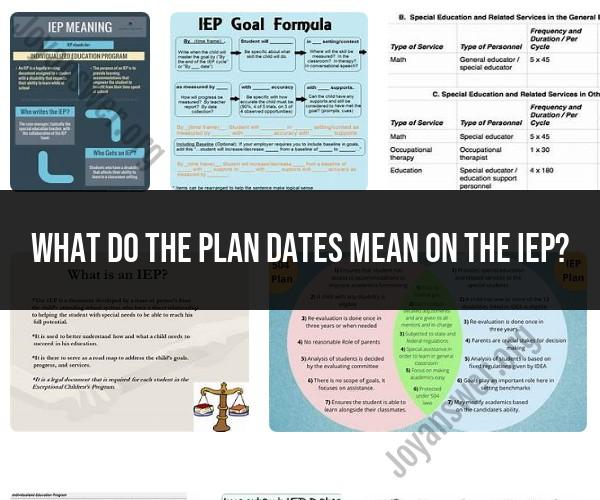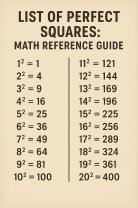What do the plan dates mean on the IEP?
Individualized Education Program (IEP) plan dates play a significant role in special education and are used to document various aspects of the IEP process. These dates are crucial for tracking the progress and implementation of services for students with disabilities. Here's a breakdown of the key plan dates and their significance on an IEP:
Annual Review Date:
- The annual review date is the date when the IEP team meets each year to review and update the student's IEP. This meeting is essential for ensuring that the student's educational goals, accommodations, and services remain appropriate and effective.
IEP Implementation Start Date:
- The IEP implementation start date specifies when the services and accommodations outlined in the IEP will begin. It is crucial for ensuring that the student receives the necessary support from the designated start date.
Reevaluation Date:
- The reevaluation date signifies when the student will be reevaluated to determine whether they continue to meet the criteria for special education services. Periodic reevaluations help assess progress and identify any changes in the student's needs.
Transition Planning Dates:
- Transition planning dates are included in the IEP for students approaching graduation or post-secondary life. These dates indicate when transition-related assessments, goals, and services will be provided to help the student prepare for life after high school.
Annual Goals and Objectives:
- IEPs typically include annual goals and objectives that specify what the student is expected to achieve within a year. These goals are often broken down into smaller objectives or benchmarks, and the plan date for each goal signifies when progress toward that goal will be assessed.
Progress Monitoring Dates:
- Progress monitoring dates are established to regularly assess the student's progress toward meeting their IEP goals and objectives. These dates help determine whether adjustments are needed to the student's educational program.
Eligibility Review Date:
- The eligibility review date is used to indicate when the IEP team will review the student's eligibility for special education services. This date may align with the reevaluation date, but it specifically focuses on eligibility determination.
Extended School Year (ESY) Dates:
- If the IEP team determines that a student requires extended school year services during the summer, ESY dates will be included in the IEP. These dates outline the duration and timing of ESY services.
Meeting Dates:
- Meeting dates are recorded to document when IEP team meetings were held, decisions were made, and changes to the IEP were discussed and agreed upon. Accurate meeting dates help maintain a record of the IEP development and review process.
These plan dates serve as critical reference points for both educators and parents/guardians. They ensure that the IEP is implemented effectively, progress is monitored, and the student's needs are regularly assessed and addressed. The IEP team, including teachers, special education professionals, parents/guardians, and the student (when appropriate), collaboratively uses these dates to support the student's educational journey and success.
Deciphering IEP Plan Dates: Understanding Their Significance
IEP plan dates are important because they ensure that students with disabilities receive the special education and related services they need in a timely manner. IEP plan dates also help to ensure that students' progress is monitored and that their IEPs are updated as needed.
IEP Plan Dates Explained: Making Sense of Individualized Education Programs
There are three main types of IEP plan dates:
- Start date: The start date is the date on which the IEP goes into effect.
- End date: The end date is the date on which the IEP expires.
- Review date: The review date is the date on which the IEP team will meet to review the student's progress and make any necessary changes to the IEP.
IEP Timeline: Interpreting Plan Dates on Individualized Education Programs
The IEP timeline is a document that shows the start date, end date, and review date for a student's IEP. The IEP timeline also includes other important dates, such as the dates of IEP meetings and progress reports.
Here is an example of an IEP timeline:
| Date | Type | Description |
|---|---|---|
| 2023-09-05 | Start date | The IEP goes into effect. |
| 2023-12-15 | Review date | The IEP team will meet to review the student's progress and make any necessary changes to the IEP. |
| 2024-03-31 | Review date | The IEP team will meet to review the student's progress and make any necessary changes to the IEP. |
| 2024-06-30 | End date | The IEP expires. |
It is important to note that IEP plan dates may change if the student's needs change or if the student moves to a new school district.
Significance of IEP plan dates
IEP plan dates are important for a number of reasons:
- They ensure that students with disabilities receive the special education and related services they need in a timely manner.
- They help to ensure that students' progress is monitored and that their IEPs are updated as needed.
- They help to ensure that students' IEPs are aligned with their state's special education standards.
- They help to ensure that students' families are involved in the IEP process and that they understand their child's IEP.
If you have any questions about IEP plan dates, please talk to your child's IEP team.













